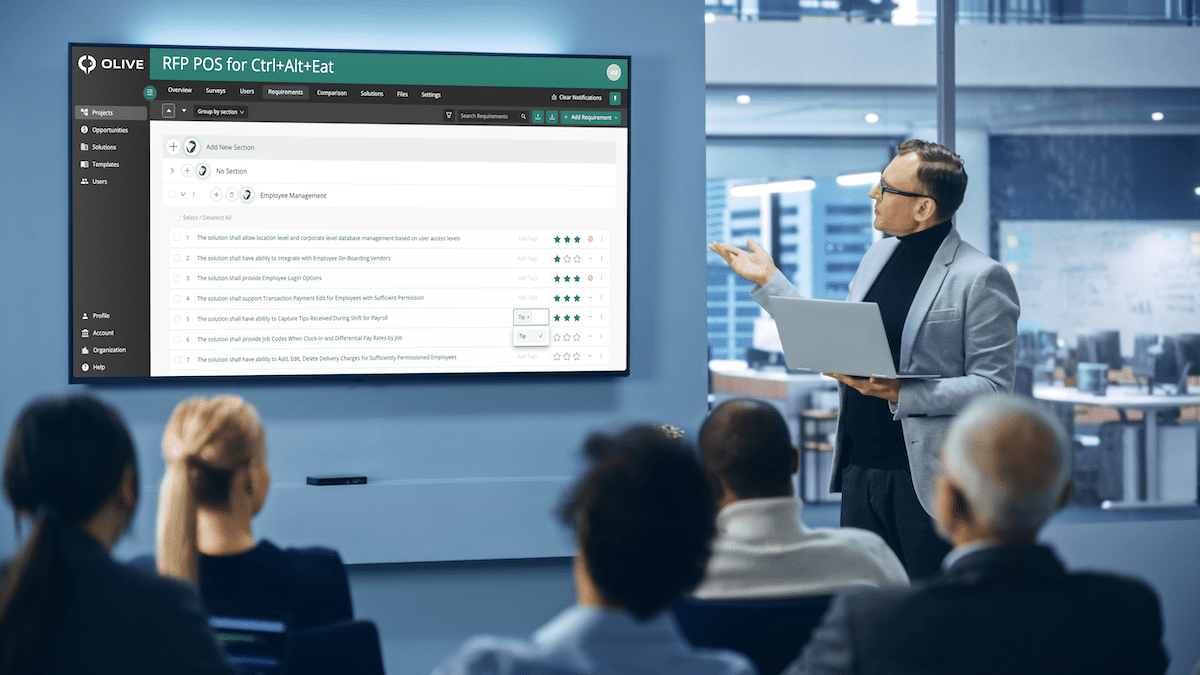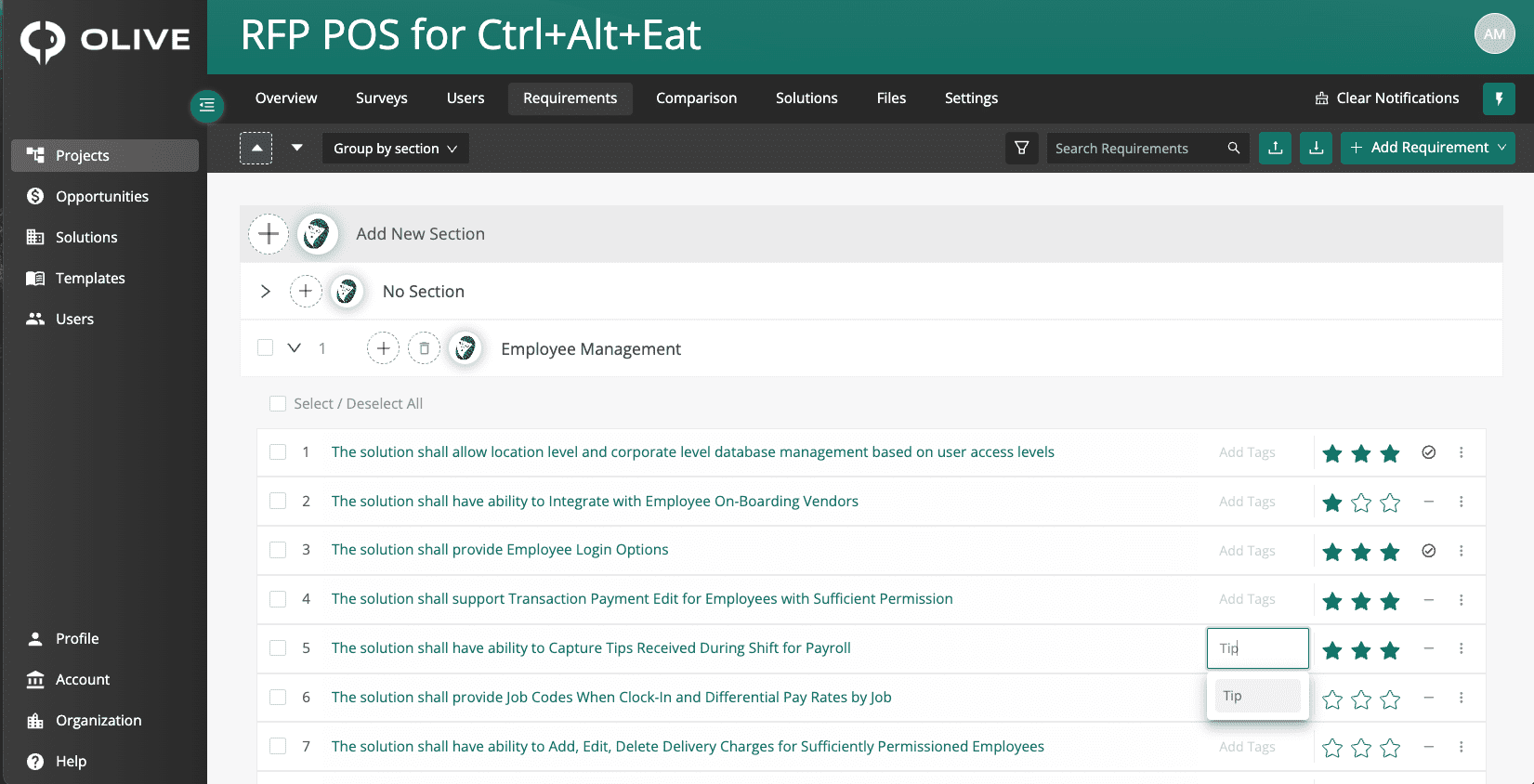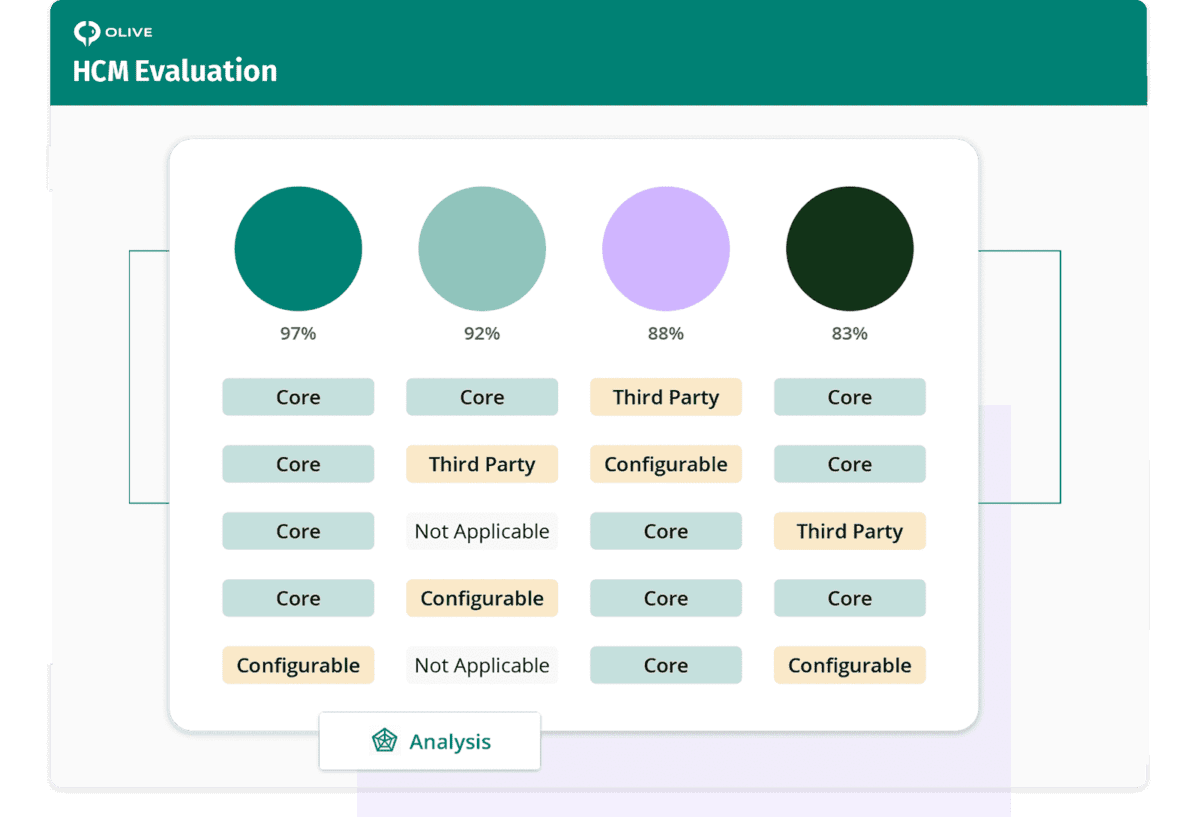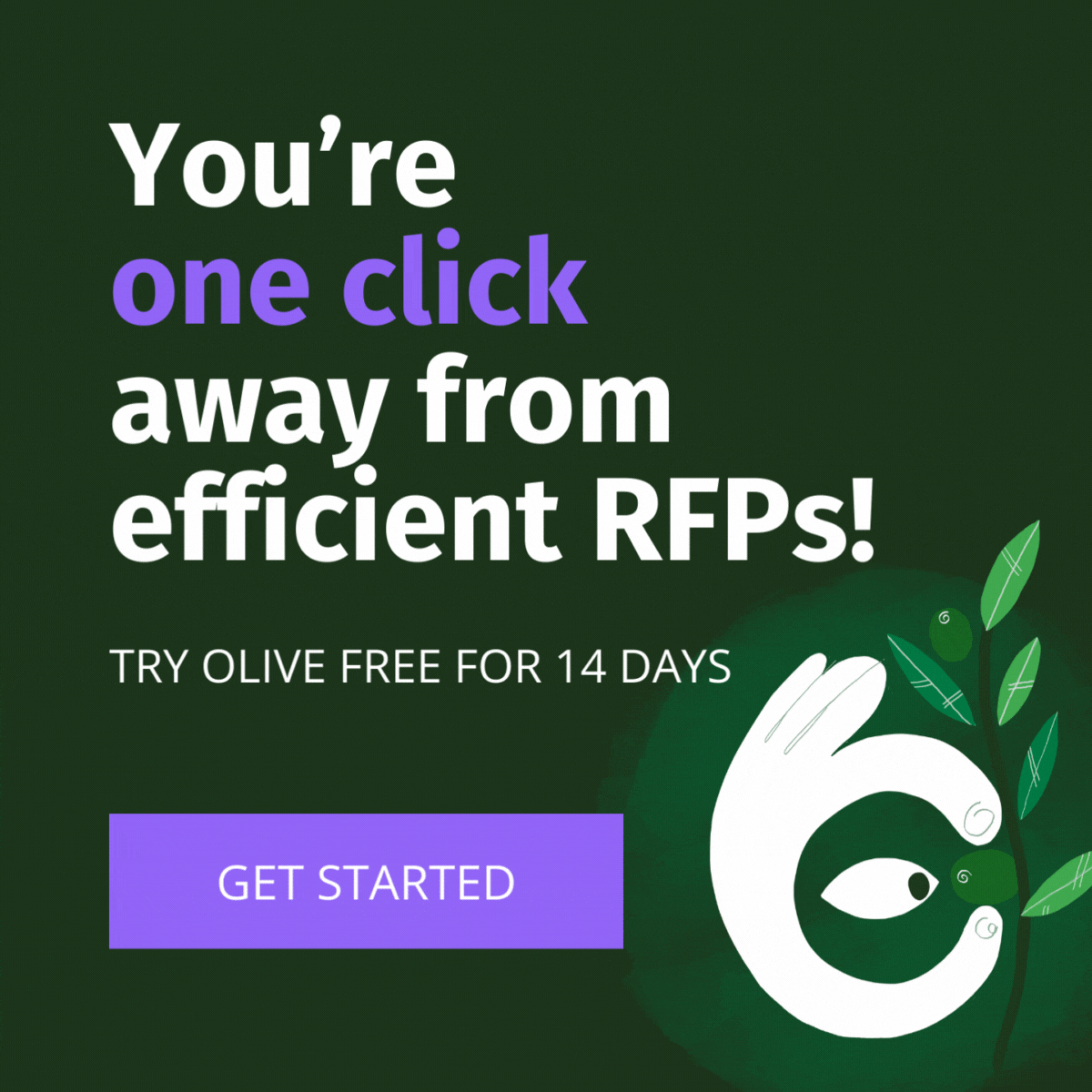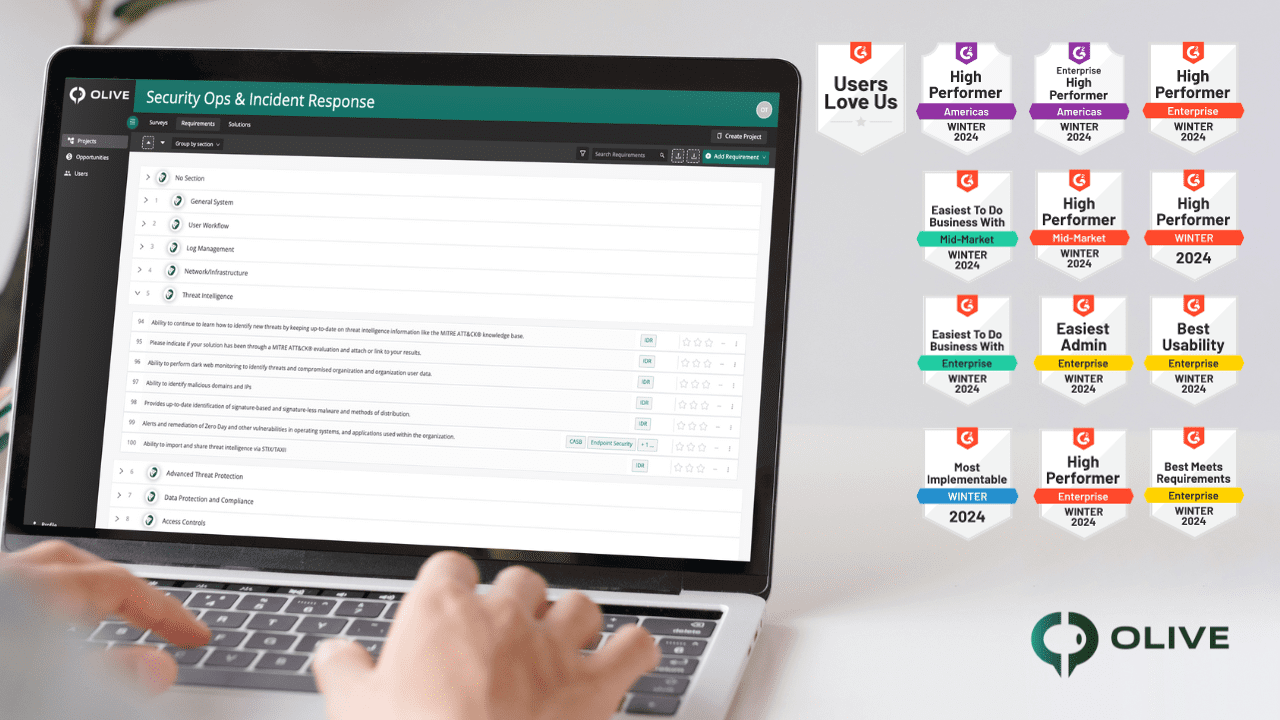When it comes to software procurement, the traditional Request for Proposal (RFP) process is facing limitations, especially in 2024. As companies grapple with challenges in terms of time, efficiency, and innovation, Olive emerges as a transformative solution, steering away from conventional methods and digitizing the process. This blog explores the nuances of the RFP process, the evolution of software sourcing, and how Olive’s AI-powered platform is reshaping the future.
What is an RFP?
A Request for Proposal (RFP) for the selection of business software is a formal document issued by companies to software vendors. This document outlines specific needs in terms of both functional and non-functional requirements. By presenting these requirements in detail, the RFP serves as a structured means for companies to communicate their expectations to potential vendors.
The primary purpose of the RFP is to facilitate a comprehensive evaluation by enabling organizations to conduct a side-by-side comparison of solutions offered by different vendors. This process lets companies objectively assess and identify the optimal software choice that best aligns with their unique business needs.
In the realm of technology and software sourcing, RFPs have been a preferred method for project initiation, but in 2024, their limitations are becoming increasingly obvious, and IT procurement experts are thinking about alternatives.
RFx (RFP, RFI, RFQ) – What’s the Difference
It’s crucial to understand these distinctions to navigate the evolving landscape of procurement more effectively. Delving into the nuances of the RFx family, we dissect the differences between RFPs, RFIs, RFQs, and RFOs.
RFx
The term “RFx” is used in procurement and refers to a request for a specific type of document. The “x” in RFx stands for a variable that can represent different types of vendor questionnaires, such as request for proposal (RFP), request for quotation (RFQ), and request for information (RFI) among others. RFx is a catch-all term that encompasses various kinds of requests used in the procurement process, allowing organizations to communicate their needs and requirements to potential suppliers.
RFP
RFP, which stands for “Request for Proposal,” and serves as a document designed to convey the project requirements to potential software vendors and elicit their proposals.
The RFP outlines information about the project, its goals, and the organization’s requirements. Additionally, it includes details about the bidding process and contractual terms. The RFP establishes a systematic format for evaluating vendor capabilities, functionality, usability, and other pertinent factors, enabling organizations to make well-informed decisions when choosing software solutions.
RFI
The RFI (Request for Information) is a formal process for gathering general information from potential suppliers of a good or service. It is used to obtain an understanding of the current market for a particular supply or service before specific requisitions. It is not binding on either the supplier or the purchaser. The RFI helps in the decision-making process by developing a well-conceived solicitation and clarifying the competitive requirements
RFQ
An RFQ (Request for Quote) is a document that details pricing options for a highly specific service or product. It is used during the procurement process when a company knows exactly what it wants and seeks pricing information, payment terms, and product specifications from potential vendors. RFQs are typically used for standardized and commoditized products or services, where the quantity and specifications are already known, allowing for easy comparison of quotes from different suppliers.
In the context of procurement, RFO stands for “Request for Offer.” It is a document used to gather and compare information from potential suppliers. The RFO outlines the buyer’s needs and invites vendors to create an offer to meet those needs. Unlike other procurement documents such as RFPs, RFIs, and RFQs, the RFO does not solely rely on a standardized question and answer format, allowing vendors to be more creative with their responses.
RFP Requirements
Well-written requirements form the backbone of any RFP. When writing RFP requirements, there are some critical elements businesses need to consider ensuring clarity and precision in the solicitation process.
In the realm of software selection, crafting well-written Request for Proposal (RFP) requirements is paramount for success. Precise and carefully articulated Requirements Specific Documentation (RSDs) or Software Requirement Specification (SRSs) can transform businesses, resolving issues and boosting productivity.
The key to successful software selection lies in well-crafted Request for Proposal (RFP) requirements, which serve as the foundation for finding the most suitable solutions.
Requirements Specific Documentation (RSDs) or Software Requirement Specifications (SRSs) play a pivotal role in communicating precise enterprise software needs to potential technology and software vendors
Benefits of an RFP for Software and Tech Procurement
While RFPs have been a staple in project announcements, lets explore the tangible benefits they offer. From opening up the competition to ensuring transparency, RFPs have played a pivotal role, but are these benefits enough in the fast-paced digital age? Conducting a Request for Proposal (RFP) for software sourcing provides key benefits:
Competition and Comparative Analysis
- Invites competitive bids, ensuring vendors provide the best solutions at competitive prices.
- Allows for a thorough analysis of proposals, including features, pricing, and overall value.
Clarity and Transparency
- Clearly articulates organization requirements, fostering transparency and fairness in evaluations.
- Helps identify and mitigate potential risks through a structured process.
Cost Control and Customization
- Outlines budget constraints, allowing vendors to tailor proposals accordingly.
- Encourages customization, ensuring the selected solution aligns closely with organizational needs.
Vendor Accountability and Efficiency
- Sets clear expectations, holding vendors accountable for proposed solutions.
- Streamlines decision-making with a structured process, preventing delays.
Engagement and Compliance
- Facilitates engagement and collaboration with vendors for a better understanding of capabilities.
- Ensures legal compliance through formal documentation.
Overall, an RFP is an efficient and systematic approach to selecting the right software solution, offering benefits such as competitive selection, risk mitigation, and cost control.
The RFP Process Explained
The traditional RFP process is characterized by its structured approach, emphasizing transparency, vendor accountability, and adherence to predefined criteria. While it has been a longstanding method, organizations may explore more modern and efficient alternatives, such as digital platforms and AI-powered solutions, to enhance the procurement process.
The conventional RFP process follows a systematic approach to procure goods or services. Here’s an overview of the traditional RFP process:
1. Requirements and Needs Identification
- Initiation: Stakeholders identify the need for external goods or services.
- Requirements Definition: Clearly articulate the project’s RFP requirements and objectives.
2. RFP Document Creation
- Scope of Work: Write a comprehensive RFP document detailing the scope, expectations, and evaluation criteria.
- Legal and Contractual Aspects: Include legal and contractual terms to protect both parties.
3. Vendor Identification:
- Market Research: Research potential vendors based on their expertise and reputation.
- Invitation: Issue the RFP to selected vendors, providing them with sufficient information to submit proposals.
4. Proposal Submission:
- Deadline: Set a deadline for vendors to respond to the RFP.
- Proposal Evaluation: Establish an evaluation team to review and score proposals based on predefined criteria.
5. Vendor Clarifications
- Vendor Queries: Address vendor queries through a clarification process.
- Communication: Maintain open communication to ensure a clear understanding of expectations.
6. Vendor Presentations (Optional)
- Selection: Shortlist vendors for presentations or interviews.
- In-Depth Assessment: Gain insights into vendor capabilities, approach, and commitment.
7. Selection and Contract Negotiation
- Decision-Making: Select the vendor that best aligns with project requirements.
- Contract Finalization: Negotiate contract terms, including deliverables, timelines, and pricing.
8. Notification to Vendors
- Communication: Inform both successful and unsuccessful vendors of the decision.
- Feedback (Optional): Provide feedback to unsuccessful vendors for continuous improvement.
9. Project Kick-off
- Initiation: Officially launch the project with a kick-off meeting.
- Expectation Setting: Ensure alignment on project goals, timelines, and deliverables.
10. Project Execution and Monitoring
- Implementation: Begin project execution as per the agreed-upon plan.
- Progress Tracking: Monitor vendor performance and project milestones.
11. Project Completion and Evaluation
- Assessment: Evaluate the completed project against initial objectives.
- Feedback: Gather feedback from stakeholders for future improvements.
12. Closure and Documentation
- Contract Closure: Close the project and fulfill contractual obligations.
- Documentation: Maintain records of the entire RFP process for audit and reference purposes.
RFP Pain Points
Issuing a Request for Proposal (RFP) involves challenges, with one key pain point being the substantial time and effort required to develop detailed documents. Crafting precise requirements often leads to delays. Managing vendor responses and conducting thorough evaluations can also be time-consuming, especially with numerous submissions. Ambiguity in RFP language is another common issue, potentially hindering the selection process. Overcoming these challenges is essential for a more efficient RFP process. The landscape of Request for Proposals (RFPs) is evolving, and businesses are grappling with the pain points of traditional processes.
RFP Software for Better Tech Sourcing Outcomes
At Olive, we firmly believe that the traditional Request for Proposal (RFP) process is on the verge of obsolescence in the ever-evolving landscape of procurement and software sourcing.
Our perspective is rooted in recognizing the downsides and limitations inherent in manual, time-consuming RFP processes, characterized by extended evaluation periods and challenges in meeting the dynamic demands of innovation and resource optimization.
These processes cause companies to bypass a thorough evaluation process, and go straight to “best in breed” vendors. What if you could keep all the benefits of the Traditional RFP process, but cut out the inefficiencies, frustrations and manual documentation?
In embracing a forward-thinking stance, Olive positions itself as a transformative RFP solution for software sourcing, advocating for a departure from traditional methods, with the goal of sourcing to the needs of the company, to ultimately drive innovation.
Companies NEED a paradigm shift towards more efficient, digital alternatives that align with the swift pace of the digital age. Our commitment to improving software sourcing lies in revolutionizing the RFP process, offering a streamlined, agile, and technology-driven approach to ensure businesses stay ahead in the rapidly changing procurement landscape.
Features for Better RFP Process Outcomes
AI Powered RFP Software
At the forefront of IT decision-making, Olive centralizes and optimizes the software sourcing process, with AI Powered RFP software, fostering seamless collaboration among IT, Procurement, Sourcing, Finance, and other stakeholders. Experience a new era where teams use AI to streamline operations and collaborate to gather insights, evaluate vendor responses, compare options, and unite in a harmonious digital workspace.
RFP Project Templates
Find Best-fit Solutions in 66% less time with pre-created in app RFP templates. Templates are pre-loaded with discovery surveys, standard requirements, vendor responses to requirements and possible vendor solutions.
RFP Templates in Olive are pre-loaded with;
- Discovery Surveys
- Standard Requirements
- User Feedback
- List of Vendors
- Vendor Responses to Requirements
RFP Project Templates Include:
ERP RFP Template (Enterprise Resource Planning)
HCM RFP Template (Human Capital Management)
LMS RFP Template (Learning Management System)
CRM RFP Template (Content management system)
SOC RFP Template (Security Operations Center)
AI Generated Requirements and Requirements Templates
Build out requirements templates based on your expertise, or use our requirements AI and Requirements Templates.
Collaborate Faster with Olive Surveys
Olive surveys allow you to deeply understand and discover additional requirements. If you don’t know where to start, Olive’s AI capabilities provide suggestions you can modify to meet your specific needs.
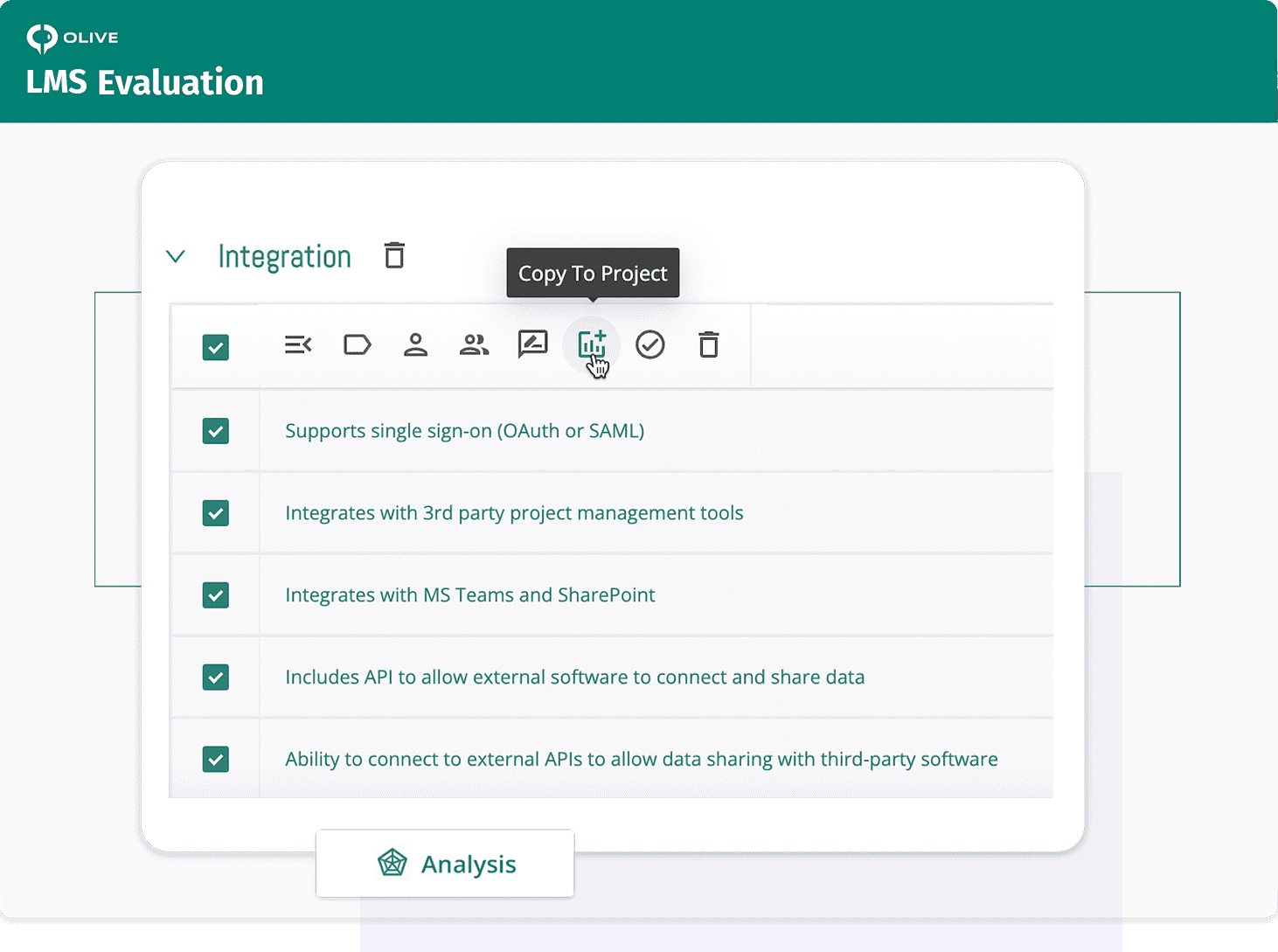
Real-Time Vendor Comparison
In the digital age, data is king. Olive’s centralized data management and real-time comparative analysis uses AI to help you see in real time which vendors are best suited to your organization’s needs.
RFP in the Digital Age
The future of RFPs is digital, and businesses must adapt. Stress the significance of adopting tools like Olive, presenting a roadmap to stay ahead in the evolving landscape of RFP processes. The digital transformation of the RFP processes is not just an evolution; it’s a strategic imperative. The future of RFPs is here, and it’s time to embrace a smoother, data-driven approach to software selection.

